#Principles of Data Ethics
Explore tagged Tumblr posts
Text

Data Ethics: Principles of Data Ethics for Responsible Use
Explore the importance and implementation of principles of data ethics for responsible data governance. Learn how ethics shape data use in the digital era. READ MORE
0 notes
Text
The Epistemology of Algorithmic Bias Detection: A Multidisciplinary Exploration at the Intersection of Linguistics, Philosophy, and Artificial Intelligence
We live in an increasingly data-driven world, where algorithms permeate nearly every facet of our existence, from the mundane suggestions of online retailers and products to the critical decisions impacting healthcare and justice systems. Photo by Tara Winstead on Pexels.com These algorithms, while often presented as objective and impartial, are inherently products of human design and the data…

View On WordPress
#Algorithm#algorithm design#algorithmic bias#Artificial Intelligence#bias#confirmation bias#critical discourse analysis#critical reflection#data bias#dataset#Deep Learning#deontology#epistemology#epistēmē#ethical principles#fairness#inequality#interdisciplinary collaboration#justice#Language#linguistics#Machine Learning#natural language processing#objectivity#Philosophy#pragmatics#prohairesis#Raffaello Palandri#sampling bias#Sapir-Whorf hypothesis
1 note
·
View note
Text
Uber’s Greyball Program: How Data Misuse Undermined Fair Information Practices
Picture a world where your data is not used to enhance your user experience, but rather help companies evade regulations. Sounds concerning, right? But that is exactly what happened with Uber’s Grayball program. The company that revolutionized the way public transportation works today have often been a center of global regulatory conflicts. Governments from various different cities and countries opposed Uber’s service, attempting to restrict or prohibit its activities. In 2014, Uber responded by developing the Greyball program approved by Uber’s legal team. This invisible mechanism leveraged user information to escape authorities and law enforcement. By doing this, Uber violated several significant data ethical and privacy rules, which infuriated many people and led to legal investigations. We'll discuss how Uber's Greyball campaign violated several important Fair Information Principles in addition to undermining local laws. Let's examine Greyball's characteristics and operation in more detail before exploring the moral repercussions of Uber's activities.
What Was Uber’s Greyball Program? Uber's Greyball program was a hidden scheme the firm employed to find and evade authorities, law enforcement, and other people trying to enforce regional laws against its ride-hailing services. The concept was created to assist Uber in getting around legal restrictions in nations and localities where its activities were either prohibited or restricted. Uber used Greyball to prevent regulators from booking trips on the app. The program worked by manipulating the app’s interface to display fake ride options to suspected authorities. In some cases, it would also prevent the ride from being booked altogether or show a "ghost" car on the map to create the illusion of service availability without actually providing any rides. It used location data to detect users near government buildings or restricted areas and monitored high-frequency ride requests in these zones. Credit card information was also analyzed, flagging users whose payment details matched known regulators or authority figures. Additionally, app usage patterns such as the speed of ride bookings, frequency of app usage in restricted areas, and attempts to book rides in banned zones were tracked, helping Greyball identify suspicious users and prevent them from accessing Uber's service. When the public learned the truth, these tactics ultimately backfired, even though they might have protected Uber's drivers and increased earnings. Businesses like Uber face greater accountability for how they manage personal data as customers grow more conscious of their rights. This leads us to the ethical standards that Uber transgressed when it used Greyball, emphasizing how crucial openness and ethical data handling are to preserving trust among clients.
Data Ethics and Uber's Greyball: Where Did Uber Go Wrong? A set of guidelines known as "fair information practices" defines how an data-driven society may handle, store, manage, and move around information while preserving security, privacy, and fairness in an increasingly changing worldwide technological environment. Uber’s Greyball program violated several of these principles by using personal data to avoid regulators, bypassing ethical standards for accountability. Next, we'll explore how Greyball directly violated these principles and the ethical implications of such breaches.
Uber misused user-provided personal information, in abuse of several fundamental ethical data usage standards. Contrary to its initial goal of offering ride services, Uber collected data without user consent and utilized it anonymously to elude authorities in defiance of the Collection Limitation Principle. The data was altered to identify regulators, which distorted its accuracy and undermined users' expectations, in violation of the Data Quality Principle. By repurposing the data for legal evasion—a goal not revealed at the time of collection—the corporation also broke the Purpose Specification Principle. Additionally, Uber violated the Use Limitation Principle by using personal data for an unlawful and unethical purpose—to avoid regulatory enforcement—instead of the original purpose. By hiding the existence of the Greyball program and denying any responsibility for it, Uber broke both the Openness Principle and the Accountability Principle. There was a severe lack of transparency about the handling of users' data because they were unaware that it was being utilized in this manner. Furthermore, Uber demonstrated a lack of accountability by refusing to acknowledge the acts committed under Greyball. The public's faith in the business was further damaged by this failure to resolve the problem and be transparent.
Uber faced strong public criticism for its actions with the Greyball initiative, which was a clear violation of fundamental data ethics rules. The legal repercussions, however, were much less harsh than many had anticipated. Uber's evasions prompted investigations, including one by the U.S. Department of Justice, despite the ethical offenses. The company's use of Greyball to evade regulators was the main focus of the investigation. Surprisingly, though, not much legal action was taken, maybe as a result of Uber's calculated change of system after the New York Times revealed its tactics, along with the company's use of excuses such as driver security to justify its actions. This lack of strong legal obligation highlights the broader consequences of corporate data exploitation; when immoral conduct is covered up and later revealed, the company's liability is often delayed or diminished. It serves as a reminder that, despite the importance of data ethics and standards, they are nevertheless difficult to regularly and openly enforce.
Conclusion Uber's Greyball program brings up significant issues regarding data ethics and corporate responsibility. Is self-regulation sufficient, or should businesses be legally obligated to adopt moral standards like the Fair Information Principles? Many businesses make the claim that they follow their own codes of conduct, but as Uber has shown, they frequently find ways to get around the law to further their own agendas, even when they justify practices like ride cancellations under the pretext of "driver safety." Can we really be sure that our personal data is being treated ethically if there isn't a single, global standard that all businesses must adhere to? When will we be able to tell if our personal information is being utilized against our will? This poses the more important question - how can we safeguard our privacy in society when data is being exchanged and used for profit all the time? We must figure out how to hold businesses responsible and ensure that user rights are upheld in the digital sphere as technology continues to advance.
#UberGrayball#DataEthics#Privacy Violations#privacy rights#tech ethics#digital privacy#User Rights#personal data#data manipulation#corporate accountability#surveillance#ethical laws#ethical principles
1 note
·
View note
Text
I think a lot of important nuance on the topic is missing here, but I want to share this becuase this comic/post does make some good points and provides a nuance that is missing from the larger discussion on AI. I'll make a post about this here.

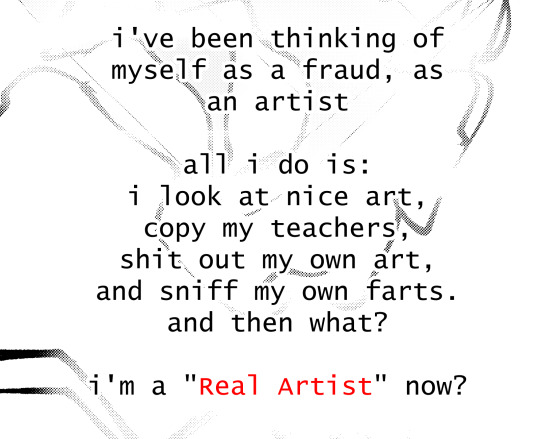
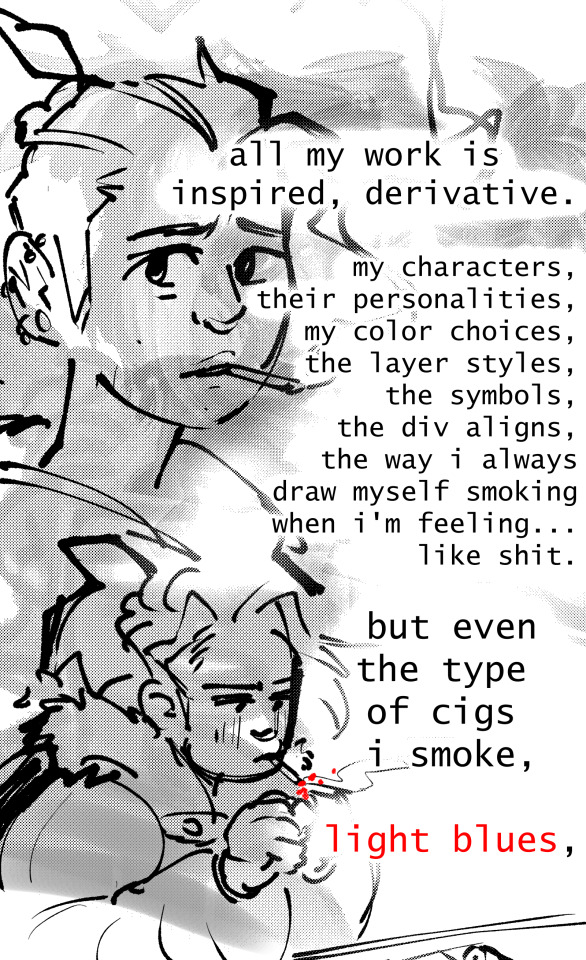




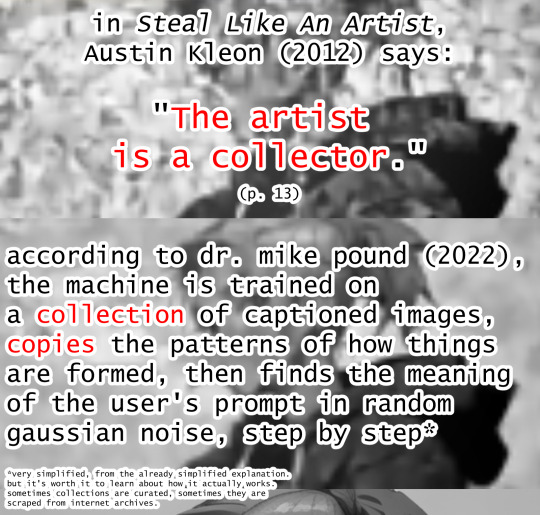

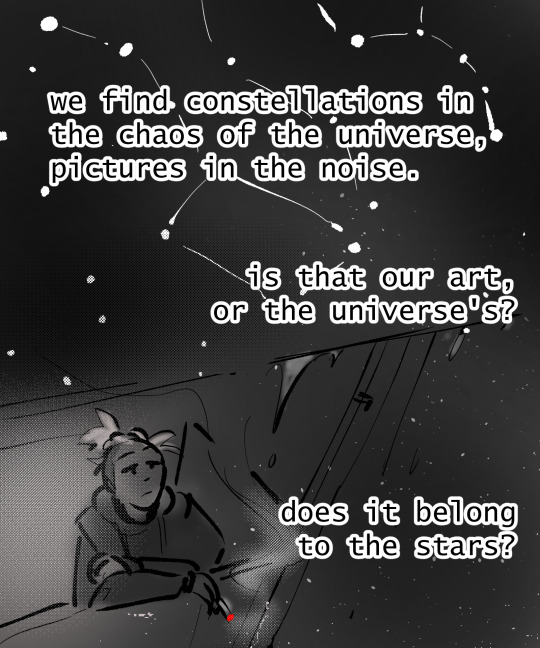
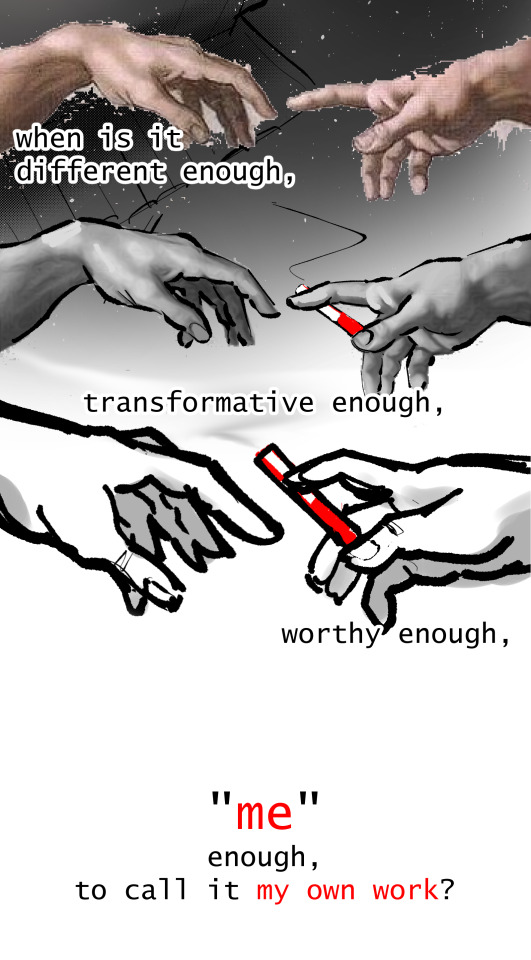

"Original" Sin is what i've titled this piece. by me. sorry if you don't have "collapse long posts" enabled. I have many thoughts.
Transcript - References
#ai#jacob geller is the goat#machine learning#plaigarism#copyright#Art#artists#artificial intelligence#artwork#digital art#ownership#ethical principles#data collection services#data harvesting#data#inspiration#copyright is BS
8K notes
·
View notes
Text
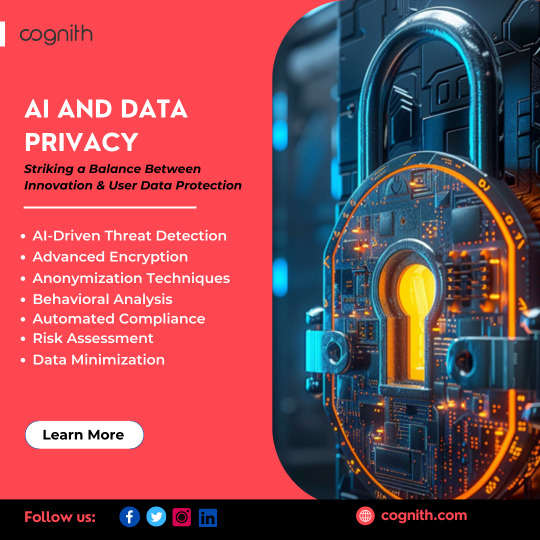
Balancing Innovation and AI and Data Privacy Discover strategies for balancing innovation with AI and data privacy to maintain trust and security.
#AI and data privacy#Ethical AI Principles#Privacy-Preserving Techniques#Auditing and Accountability
0 notes
Text
White House Publishes Steps to Protect Workers from the Risks of AI
Last year the White House weighed in on the use of artificial intelligence (AI) in businesses. Since the executive order, several government entities including the Department of Labor have released guidance on the use of AI. And now the White House published principles to protect workers when AI is used in the workplace. The principles apply to both the development and deployment of AI systems.…

View On WordPress
#AI#Artificial Intelligence#awareness#businesses#department of labor#deployment#development#ethical development#governance#guidance#Oversight#principles#privacy#Security of Data#transparency#White House#workplace laws
0 notes
Text
Latest AI Regulatory Developments:
As artificial intelligence (AI) continues to transform industries, governments worldwide are responding with evolving regulatory frameworks. These regulatory advancements are shaping how businesses integrate and leverage AI technologies. Understanding these changes and preparing for them is crucial to remain compliant and competitive. Recent Developments in AI Regulation: United Kingdom: The…

View On WordPress
#AI#AI compliance#AI data governance#AI democratic values#AI enforcement#AI ethics#AI for humanity#AI global norms#AI human rights#AI industry standards#AI innovation#AI legislation#AI penalties#AI principles#AI regulation#AI regulatory framework#AI risk classes#AI risk management#AI safety#AI Safety Summit 2023#AI sector-specific guidance#AI transparency requirements#artificial intelligence#artificial intelligence developments#Bletchley Declaration#ChatGPT#China generative AI regulation#Department for Science Innovation and Technology#EU Artificial Intelligence Act#G7 Hiroshima AI Process
1 note
·
View note
Text

Principles of Asexual Heredity in the Phyrexian Organism
We know these things for sure about Phyrexian reproductive biology:
Phyrexians reproduce asexually; it is well known that one drop of oil, from one individual, is enough to birth a population of offspring (such as all of New Phyrexia) or convert a non-Phyrexian organism.
Phyrexians natively born of the oil ("core-born") inherit mnemonic and phenotypic (appearance) information from the oil that created them. For example, core-born Phyrexians of the Orthodoxy naturally develop porcelain metal; it is an inherited, lineage-specific trait. The oil also carries ancestral knowledge such as the Phyrexian language and echoes of history.
The five suns of Mirrodin somehow caused the originally mono-black lineage of Phyrexian oil to splinter into five colored lineages. They may have all arisen from one drop of oil, but they are phenotypically diverse.
(Little canon data is given about the genealogies of core-born newts, but it would most logically follow that Phyrexians descend from single-parent lines, a family tree with continually forking branches and no unions of mating as with sexually reproducing organisms.)
The mechanism I propose for the diversification of Phyrexians on Mirrodin is mana-induced mutagenesis. As a deeply magical material, it follows that Phyrexian oil is prone to being influenced by concentrated sources of mana, such as the suns of Mirrodin (which were trapped in the core, in close proximity to the progenitor oil, during the birth of New Phyrexia). Exposure to mana can thus cause de novo mutation in glistening oil that manifests as novel phenotypic traits in resulting Phyrexians. These mutations are not random, guiding phenotypes to align with the color causing the mutation.
Then there is the issue of inheritance via phyresis, or compleating another organism which was not originally Phyrexian by introducing Phyrexian genetic material into its body. To keep it simple I will begin with mono-color infections: an organism is infected with oil from a Phyrexian whose lineage traits (i.e. white-aligned Orthodoxy lineage, porcelain) may not match their own color identity.
Hypothesis: Phenotype (what color/type of Phyrexian an infected individual becomes) is determined solely by the color of infection, not the subject's own colors. Crucially this isn't the same as color identity; i.e. one can be a porcelain Phyrexian and still have a Boros identity by gaining red-aligned values or retaining them from a pre-compleation life, even though their phenotype is white only. (Much like how elves are associated with green mana, but Simic-identity elves exist.) This phenotype color, in turn, is also what would be passed down to any newts the turned individual creates, or subjects they themselves infect.
MOM corroborates this hypothesis. A mono-black-aligned human, upon exposure to Progress Engine oil, becomes a Phyrexian with a pure blue-aligned phenotype. The changes to their color identity are additive--they retain black alignment--but their phenotype is blue only. All the transforming creatures of MOM follow this pattern.


However, Planeswalkers in ONE did not. For example, Jace was infected by Vraska, who had both black color identity and a black/Thanes-aligned phenotype, but spontaneously developed eyestalks and other traits characteristic of blue Phyrexians from the Progress Engine.


New hypothesis: Individuals with a strong enough internal concentration of mana, i.e. Planeswalkers, cause oil to mutate in vivo to align with their own color, much like how the suns mutated oil in Mirrodin's core. This further shows that mana-induced mutagenesis is color-specific. This should however create a new blue lineage, independent of the Progress Engine, also spawned of blue mana but not necessarily identical. I do not have an explanation for Jace's resemblance to the Progress Engine besides convergent "evolution."
Proposed further study (not ethics-approved): Infect a colorless Planeswalker, i.e. Ugin, with colored oil to test whether a null color identity still has mutagenic effects.
To complicate this, though, we also have examples of Phyrexians who are chimeras of multiple colors, combining traits of different lineages. Vishgraz was assembled with material (genetic and otherwise) from a white, a green, and a black Phyrexian. It makes sense that Phyrexians put together in this patchwork way could have a combination phenotype. Atraxa was not assembled from scratch, but infected with four separate colors at once. Maybe there are just four types of oil circulating in her body?


I am, of course, interested in inheritance. If these Phyrexians show combined phenotypes, what colored trait(s) do they actually pass down? Do they have individual "cells" that are still only white, only green, only black, etc., or did the colors somehow combine on the most basic hereditary unit level? Thankfully, we actually do have an example of a "chimera" Phyrexian asexually producing core-born offspring: Ixhel.

Ixhel shares multiple colors with Atraxa, not only in her color identity but also apparent phenotype (she has both Orthodoxy porcelain and Swarm copper). Two possibilities here: 1) She truly inherited both genetically; Atraxa passes down multiple colors when she reproduces. 2) Her "core" physiology is still rooted in one color, i.e. white porcelain, and the green parts were added after the fact. I don't have an answer for this, but it's intriguing to consider.
Proposed further study: Attempt to isolate the smallest "unit" of Phyrexian heredity (one single nanobot of the oil) and test if it can only store information about one color, or multiple. See if a germ is formed from only one of these units, as with eukaryotic zygotes, or from multiple.
My theories of Phyrexian reproductive biology remain highly speculative, but every new piece of data adds fuel to this fire, and I have plenty to elaborate on in later posts. If only the interplanar ethics committee would stop delaying my research.
#here from VERY POPULAR DEMAND#mtg#magic the gathering#phyrexian#new phyrexia#speculative biology#atraxa#ixhel#vishgraz#jace beleren#vraska#phyrexia all will be one#march of the machine#xenobiology
587 notes
·
View notes
Text
I'm probably going to piss some people off with this, but.
The use of AI and machine learning for harmful purposes is absolutely unacceptable.
But that isn't an innate part of what it does.
Apps or sites using AI to generate playlists or reading lists or a list of recipes based on a prompt you enter: absolutely fantastic, super helpful, so many new things to enjoy, takes jobs from no-one.
Apps or sites that use a biased algorithm (which is AI) which is not controllable by users or able to be turned off by them, to push some content and suppress others to maximize engagement and create compulsive behavior in users: unethical, bad, capitalism issue, human issue.
People employing genAI to create images for personal, non-profit use and amusement who would not have paid someone for the same service: neutral, (potential copyright and ethics issue if used for profit, which would be a human issue).
People incorporating genAI as part of their artistic process, where the medium of genAI is itself is a deliberate part of the artist's technique: valid, interesting.
Companies employing genAI to do the work of a graphic designer, and websites using genAI to replace the cost of stock photos: bad, shitty, no, capitalist and ethical human issue.
People attacking small artists who use it with death threats and unbelievable vitriol: bad, don't do that.
AI used for spell check and grammar assistance: really great.
AI employed by eBay sellers to cut down on the time it takes to make listings: good, very helpful, but might be a bad idea as it does make mistakes and that can cost them money, which would be a technical issue.
AI used to generate fake product photos: deceptive, lazy, bad, human ethical issue.
AI used to identify plagiarism: neutral; could be really helpful but the parameters are defined by unrealistic standards and not interrogated by those who employ it. Human ethical issue.
AI used to analyze data and draw up complex models allowing detection of things like cancer cells: good; humans doing this work take much longer, this gives results much faster and allows faster intervention, saving lives.
AI used to audit medical or criminal records and gatekeep coverage or profile people: straight-up evil. Societal issue, human ethical issue.
AI used to organize and classify your photos so you don't have to spend all that time doing it: helpful, good.
AI used to profile people or surveil people: bad and wrong. Societal issue, human issue, ethical issue.
I'm not going to cover the astonishingly bad misinformation that has been thrown out there about genAI, or break down thought distortions, or go into the dark side of copyright law, or dive into exactly how it uses the data it is fed to produce a result, or explain how it does have many valid uses in the arts if you have any imagination and curiosity, and I'm not holding anyone's hand and trying to walk them out of all the ableism and regurgitated capitalist arguments and the glorification of labor and suffering.
I just want to point out: you use machine learning (AI) all the time, you benefit from it all the time. You could probably identify many more examples that you use every day. Knee-jerk panicked hate reflects ignorance, not sound principles.
You don't have beef with AI, you have beef with human beings, how they train it, and how they use it. You have beef with capitalism and thoughtlessness. And so do I. I will ruthlessly mock or decry misuse or bad use of it. But there is literally nothing inherently bad in the technology.
I am aware of and hate its misuse just as much as you do. Possibly more, considering that I am aware of some pretty heinous ways it's being used that a lot of people are not. (APPRISS, which is with zero competition for the title the most evil use of machine learning I have ever seen, and which is probably being used on you right now.)
You need to stop and actually think about why people do bad things with it instead of falling for the red herring and going after the technology (as well as the weakest human target you can find) every time you see those two letters together.
You cannot protect yourself and other people against its misuse if you cannot separate that misuse against its neutral or helpful uses, or if you cannot even identify what AI and machine learning are.
370 notes
·
View notes
Text
Writing Notes: Philosophy

Philosophy - aims to ascertain basic existentialist truths of the world around us.
The term comes from “philosophia,” a word that has Greek and Latin origins.
Philosophers examine the nature of reality by posing philosophical questions or problems that they then attempt to solve through critical thinking.
Branches of Philosophy
Much of the value of philosophy lies in the specialization and categorization of philosophical questions that cannot be easily answered with empirical data or scientific knowledge.
Scholars organize such questions into different branches of thought, although there are perhaps as many ways of categorizing the different branches as there are scholars.
Here are just 3 of the potentially dozens of branches of philosophy:
Epistemology: Also called the theory of knowledge, this analytic philosophy studies the scope, validity, and extent of human knowledge—in other words, concepts surrounding how we can confirm what we think we know is true. Immanuel Kant’s Critique of Pure Reason is an example of epistemology. In this work, Kant disagrees with philosopher David Hume, that our experiences and perceptions of things are subjective—therefore, our knowledge of things is not universal. Epistemology overlaps with many other branches of philosophy since human knowledge is relevant in other areas, such as the philosophy of language and the philosophy of mind.
Ethics: The moral philosophy of ethics is one of the oldest and broadest branches of philosophy. Ethics works to debate values of good and evil and questions where human actions fall on that spectrum. The ancient Greeks struggled with these questions as they developed their societies along two schools of thought—Stoicism and Epicureanism. Although these two schools, established in 300 BC, shared several tenets, they differed in describing the best way to live. Stoics believed that living a just and virtuous life was paramount, while Epicureans believed the search for pleasure should be the highest priority. Due to its broad nature, ethics is pervasive in nearly every academic discipline and overlaps within several other areas of thought, including the philosophy of history, the philosophy of law, and the philosophy of religion.
Metaphysics: The principles of metaphysics question our place in the world and the meaning of life and human existence. Metaphysics, like ethics, began as one of the main branches of philosophy in ancient Greece. One of the premier philosophical works that established the branch was Aristotle’s Physics. In exploring the working mechanics of our reality, Aristotle created foundations of thought that became important to western institutions and religions, like Christianity. Aristotle’s work greatly influenced the thirteenth-century Italian priest Thomas Aquinas, who utilized aspects of Aristotle’s philosophy of nature to confirm the existence of God as the omnipotent architect of the universe. Metaphysics often encompasses or overlaps with the philosophy of science—for example, as scientists grapple with questions related to humanity’s literal and figurative place in the universe.
Historical Figures of Eastern Philosophy
Learn how these notable eastern philosophers shaped their cultures with religion and philosophical breakthroughs throughout the history of philosophy:
Laozi (born circa 570 BCE): The historical existence of Laozi, or Lao Tzu, is disputed, but some believe the Chinese philosopher is the author of the Tao Te Ching, a manuscript central to the philosophical religion known as Daoism (or Taoism). The metaphysical and ethical philosophy promotes living in harmony with nature and doing no harm to others.
Confucius (551–479 BCE): The teachings of this Chinese philosopher and politician formulated the basic tenets of East Asian societies. Known as Confucianism, the Chinese philosophy encouraged family loyalty, ancestral appreciation, and education—concepts that remain important to modern Chinese traditions.
Siddhartha Gautama (born in fifth century BCE): Historians and academics dispute the facts of the life of Siddhartha Gautama, also known as the Buddha. By some traditions, he was born into an aristocratic family and enjoyed an entitled life until he decided to pursue a nomadic and ascetic lifestyle. Over time, people attributed teachings to him on self-restraint, meditation, and mindfulness—ideas that grew into a popular world religion.
Jalāl ad-Dīn Mohammad Rūmī (1207–1273): A thirteenth-century Persian poet, Jalāl ad-Dīn Mohammad Rūmī wrote Quranic verses and Sufi poems that scholars still translate and publish today. A large part of philosophy in Rumi’s poetry is his set of values around love and religion. His philosophy of life focused on using art and self-expression to bring humans closer to God.
Historical Figures of Western Philosophy
Ancient Greek philosophers established western philosophy as early as the sixth century BCE. Here are a handful of Greek philosophy figures who created theoretical foundations and frameworks that future generations could use to question their own complex societies:
Socrates (470–399 BCE): The Athenian philosopher Socrates is credited as the founding father of western philosophy and the Socratic method—a form of questioning that scholars in multiple areas of philosophy use to pinpoint shortcomings in logic or beliefs. His teachings were never published but lived on through the work of his student, Plato.
Plato (428/427–348/347 BCE): An influential thinker of the classical Greek period, Plato is famous for his theory of forms, which questions the connection between our minds and reality. He is also remembered for his several published works, like The Republic, which communicated his social and political philosophy.
Aristotle (384–322 BCE): The philosopher Aristotle was a star pupil of Plato’s (another ancient philosopher) and went on to found his own school, called Lyceum. During his career, Aristotle collected and simplified the philosophies of his predecessors and contributed to philosophical work in nearly every aspect of classical Greek culture. He was the first ancient philosopher to analyze the concept of free will.
René Descartes (1596–1650): A French mathematician and philosopher, René Descartes is best known for the existentialism theories he put forth in Discourse on the Method and his statement: “I think, therefore I am.” Descartes’ natural philosophy and metaphysical inquiries, as well as his thoughts on the existence of God, established him as a pioneer of modern philosophy.
Georg Wilhelm Friedrich Hegel (1770–1831): German philosopher Georg Hegel is best known for his metaphysical concept known as idealism. The concept dictates that the perceptions of a self-conscious mind result in the most accurate interpretations of concrete objects. His work had a dramatic impact on western philosophy in the twentieth century and influenced the works of philosophers Karl Marx and Friedrich Nietzsche.
Source ⚜ More: Notes & References ⚜ Writing Resources PDFs
#philosophy#writing notes#studyblr#writeblr#dark academia#writing reference#writing inspiration#worldbuilding#literature#writers on tumblr#writing prompt#spilled ink#history#creative writing#writing ideas#light academia#ivan kramskoy#writing resources
127 notes
·
View notes
Text
Technomancy: The Fusion Of Magick And Technology

Technomancy is a modern magickal practice that blends traditional occultism with technology, treating digital and electronic tools as conduits for energy, intent, and manifestation. It views computers, networks, and even AI as extensions of magickal workings, enabling practitioners to weave spells, conduct divination, and manipulate digital reality through intention and programming.
Core Principles of Technomancy
• Energy in Technology – Just as crystals and herbs carry energy, so do electronic devices, circuits, and digital spaces.
• Code as Sigils – Programming languages can function as modern sigils, embedding intent into digital systems.
• Information as Magick – Data, algorithms, and network manipulation serve as powerful tools for shaping reality.
• Cyber-Spiritual Connection – The internet can act as an astral realm, a collective unconscious where digital entities, egregores, and thought-forms exist.
Technomantic Tools & Practices
Here are some methods commonly utilized in technomancy. Keep in mind, however, that like the internet itself, technomancy is full of untapped potential and mystery. Take the time to really explore the possibilities.
Digital Sigil Crafting
• Instead of drawing sigils on paper, create them using design software or ASCII art.
• Hide them in code, encrypt them in images, or upload them onto decentralized networks for long-term energy storage.
• Activate them by sharing online, embedding them in file metadata, or charging them with intention.
Algorithmic Spellcasting
• Use hashtags and search engine manipulation to spread energy and intent.
• Program bots or scripts that perform repetitive, symbolic tasks in alignment with your goals.
• Employ AI as a magickal assistant to generate sigils, divine meaning, or create thought-forms.

Digital Divination
• Utilize random number generators, AI chatbots, or procedural algorithms for prophecy and guidance.
• Perform digital bibliomancy by using search engines, shuffle functions, or Wikipedia’s “random article” feature.
• Use tarot or rune apps, but enhance them with personal energy by consecrating your device.
Technomantic Servitors & Egregores
• Create digital spirits, also called cyber servitors, to automate tasks, offer guidance, or serve as protectors.
• House them in AI chatbots, coded programs, or persistent internet entities like Twitter bots.
• Feed them with interactions, data input, or periodic updates to keep them strong.
The Internet as an Astral Plane
• Consider forums, wikis, and hidden parts of the web as realms where thought-forms and entities reside.
• Use VR and AR to create sacred spaces, temples, or digital altars.
• Engage in online rituals with other practitioners, synchronizing intent across the world.
Video-game Mechanics & Design
• Use in-game spells, rituals, and sigils that reflect real-world magickal practices.
• Implement a lunar cycle or planetary influences that affect gameplay (e.g., stronger spells during a Full Moon).
• Include divination tools like tarot cards, runes, or pendulums that give randomized yet meaningful responses.

Narrative & World-Building
• Create lore based on historical and modern magickal traditions, including witches, covens, and spirits.
• Include moral and ethical decisions related to magic use, reinforcing themes of balance and intent.
• Introduce NPCs or AI-guided entities that act as guides, mentors, or deities.
Virtual Rituals & Online Covens
• Design multiplayer or single-player rituals where players can collaborate in spellcasting.
• Implement altars or digital sacred spaces where users can meditate, leave offerings, or interact with spirits.
• Create augmented reality (AR) or virtual reality (VR) experiences that mimic real-world magickal practices.
Advanced Technomancy
The fusion of technology and magick is inevitable because both are fundamentally about shaping reality through will and intent. As humanity advances, our tools evolve alongside our spiritual practices, creating new ways to harness energy, manifest desires, and interact with unseen forces. Technology expands the reach and power of magick, while magick brings intention and meaning to the rapidly evolving digital landscape. As virtual reality, AI, and quantum computing continue to develop, the boundaries between the mystical and the technological will blur even further, proving that magick is not antiquated—it is adaptive, limitless, and inherently woven into human progress.

Cybersecurity & Warding
• Protect your digital presence as you would your home: use firewalls, encryption, and protective sigils in file metadata.
• Employ mirror spells in code to reflect negative energy or hacking attempts.
• Set up automated alerts as magickal wards, detecting and warning against digital threats.
Quantum & Chaos Magic in Technomancy
• Use quantum randomness (like random.org) in divination for pure chance-based outcomes.
• Implement chaos magick principles by using memes, viral content, or trend manipulation to manifest desired changes.
AI & Machine Learning as Oracles
• Use AI chatbots (eg GPT-based tools) as divination tools, asking for symbolic or metaphorical insights.
• Train AI models on occult texts to create personalized grimoires or channeled knowledge.
• Invoke "digital deities" formed from collective online energies, memes, or data streams.
Ethical Considerations in Technomancy
• Be mindful of digital karma—what you send out into the internet has a way of coming back.
• Respect privacy and ethical hacking principles; manipulation should align with your moral code.
• Use technomancy responsibly, balancing technological integration with real-world spiritual grounding.
As technology evolves, so will technomancy. With AI, VR, and blockchain shaping new realities, magick continues to find expression in digital spaces. Whether you are coding spells, summoning cyber servitors, or using algorithms to divine the future, technomancy offers limitless possibilities for modern witches, occultists, and digital mystics alike.

"Magick is technology we have yet to fully understand—why not merge the two?"
#tech witch#technomancy#technology#magick#chaos magick#witchcraft#witch#witchblr#witch community#spellwork#spellcasting#spells#spell#sigil work#sigil witch#sigil#servitor#egregore#divination#quantum computing#tech#internet#video games#ai#vr#artificial intelligence#virtual reality#eclectic witch#eclectic#pagan
104 notes
·
View notes
Text
Why does the weather keep changing?!

Weather scientist reader x Scientist phainon whos artificially changing the weather :0 what could possibly go wrong PHAINON FANART AT THE END OF THE POST!!

The moment you saw the weather reports go haywire, you knew something was wrong.
For years, you had dedicated your life to understanding the unpredictable nature of the skies—studying storm patterns, atmospheric shifts, and climate changes. Weather was a delicate balance of science and nature, governed by centuries-old principles that even the most advanced meteorologists struggled to predict with absolute certainty. And yet, something—someone—was tipping the scales.
It started subtly. A mild anomaly here, an unexpected shift there. A sudden drop in pressure that meteorological models hadn't accounted for. At first, you chalked it up to a rare, yet natural deviation. Uncommon, but not impossible. But as days passed, the anomalies became more frequent. More erratic. More impossible.
One evening, you sat in your lab, staring at satellite images that simply did not make sense.
According to every forecast model, the eastern seaboard was supposed to experience heavy rainfall over the next 48 hours. But outside your window? Nothing. Clear skies. No clouds forming where they should have been. Not even a hint of humidity in the air. It was as if the storm had just... vanished.
You double-checked the data. Triple-checked. Ran simulations, compared historical trends, even consulted with your colleagues in other departments. Nothing added up. The storm should have happened.
The next day, the opposite occurred. A severe thunderstorm erupted out of nowhere, completely unpredicted by any meteorological model. Lightning struck in regions that had no atmospheric conditions to support it. You stared at your screen, watching real-time data pour in, and felt your stomach sink.
“This isn’t natural,” you muttered, fingers tightening around your stylus as you scrolled through satellite readings. “This isn’t possible.”
You reached out to national weather agencies, but they were just as baffled as you were. Some blamed equipment malfunctions. Others suggested it was a rare atmospheric anomaly. But you knew better. This wasn’t an error.
Someone was artificially changing the weather.
And you were going to find out who.
♥ ♥ ♥ ♥ ♥
Your investigation led you to an independent research facility under the name "Elysiae Dynamics." A company that had seemingly appeared out of nowhere, its research papers riddled with vague references to “atmospheric influence” and “climate engineering.” No one in the meteorological community had ever heard of them until recently, and yet, they had just filed a patent for atmospheric manipulation technology.
That’s when you met him.
A tall, cheery young man, 6’2 with messy white hair and cerulean blue eyes, wearing a lab coat over a wrinkled button-up shirt and sneakers that looked far too casual for someone playing god with the atmosphere.
“Ah! You must be the weather scientist!” His voice was bright, chipper, like he wasn’t single-handedly disrupting global climate stability. “I was wondering when you’d show up.”
You narrowed your eyes. “And you are?”
“Phainon! Head of experimental meteorological engineering here at Elysiae Dynamics.” He beamed, extending a hand. “I’m the guy who made it rain during your picnic last weekend. Sorry about that! Just had to test a hypothesis.”
You didn’t shake his hand. “You—you what?”
“Oh, don’t look so mad! You should be impressed! I successfully altered the weather without any negative ecological consequences!” Phainon leaned against his desk, arms crossed, still grinning like a fool. “Come on, you of all people should appreciate this. Isn't controlling the weather the dream of every meteorologist?”
“It’s not a dream, it’s an ethical nightmare!” You snapped. “Do you have any idea how dangerous this is? The slightest miscalculation could throw entire ecosystems off balance! Not to mention the political implications—”
Phainon tilted his head. “But I didn’t miscalculate.”
His confidence was infuriating. His logic, irritatingly sound. And worst of all? You couldn’t deny that what he had accomplished was groundbreaking.
“…This is reckless,” you muttered, rubbing your temples. “And insanely impressive. But mostly reckless.”
Phainon’s grin widened. “I’ll take that as a compliment.”
You groaned. “I need access to your research.”
“Oh-ho, so now you’re interested?”
“I was always interested. But now I need to make sure you’re not about to cause the next ice age.”
Phainon chuckled, stepping closer—too close. His presence was overwhelming in the way only someone deeply, unapologetically passionate about their work could be. “Tell you what, partner,” he said, voice teasing, “help me refine it, make it safer. You’re the expert on natural weather—I’m just the guy making it unnatural. Work with me, and we can create something truly extraordinary.”
You wanted to refuse. You really, really did.
But damn it, he had a point.
“…Fine.”
His eyes lit up, like a storm forming in the depths of a clear sky. “Excellent! Now, let’s get to work—I was thinking about making it snow in July next. Just for fun!”
You groaned. This was going to be a long partnership. ♥ ♥ ♥ ♥ ♥ And long it was. Over the next few weeks, you found yourself sucked into the chaotic whirlwind that was Phainon’s scientific madness. He worked at an impossible pace, throwing around ideas that shouldn’t have been possible but somehow were. One minute, he’d be theorizing about localized heatwaves, and the next, he’d be actively making them happen.
“You can’t just create a thunderstorm over the city because you think it would look cool,” you hissed one afternoon, watching in horror as Phainon gleefully adjusted dials on his control panel.
“Oh, but I can,” he countered, eyes gleaming. “It’s all about the precision. Watch—three, two, one…”
A bolt of lightning cracked across the sky, illuminating the city below.
“…Boom.”
You stared at him. “You are so going to get arrested.”
“Nah, only if they catch me.”
You groaned, shoving your hands into your lab coat pockets. “Unbelievable. You’re like a child with a god complex.”
Phainon grinned. “And yet, you’re still here.”
Damn it. He had a point. Again.
The worst part? You were starting to enjoy it.

Lately, though, you had been feeling exhausted.
The late nights, the stress, the mental load of balancing scientific integrity with Phainon’s chaos—it was all catching up to you. Your movements were slower, your focus slipping. Even Phainon, for all his oblivious enthusiasm, noticed.
That afternoon, when the sun was unbearably hot and the air in the lab felt thick and suffocating, you slumped over your desk, barely listening as Phainon rambled about his next experiment.
And then, suddenly—
A breeze.
Cool, crisp, and carrying the scent of oncoming rain. You blinked in confusion, looking up just in time to see Phainon, standing by the open window, a knowing smile on his face.
“You looked like you needed a break,” he said simply, leaning against the sill. “So I changed the weather. Just a little.”
Your eyes widened. The screens behind you, once displaying the sweltering forecast, now showed cloud cover rolling in. The suffocating heat? Gone.
“…You did this?” Your voice was barely above a whisper.
Phainon grinned. “Of course. Can’t have my partner melting away on me, can I?”
Your heart skipped a beat.
Damn him.
“C’mon,” he suddenly said, pushing off the window ledge. “Let’s go outside for a bit. We’ve been in this lab for too long, and I changed the weather for you. C’mon.”
Before you could protest, Phainon grabbed your hand and dragged you toward the exit, leaving behind a room full of stunned scientists, their jaws practically on the floor as they watched him whisk you away like a force of nature itself. ♥ ♥ ♥ ♥ ♥
The moment you stepped outside, a crisp breeze greeted you, carrying the scent of damp earth and something electrifying—the prelude to a storm. You glanced up at the sky, expecting the soft cloud cover Phainon had crafted just for you, but instead—
A downpour.
Cold, heavy raindrops pelted down from the heavens, drenching the both of you in an instant. It wasn’t just a light drizzle or a gentle summer rain—it was an absolute deluge.
You gasped, half in shock, half in disbelief.
Phainon, still holding your hand, blinked up at the sky in stunned silence.
Then you burst out laughing. Loud, uncontrollable laughter.
“Oh my god—did you leave the machine on auto mode?!” you choked out between fits of laughter. “Phainon, the weather just changed again! WHAT DID YOU DO?”
He stared at you for a second, then back at the rain, and then at you again.
“…I might have forgotten to turn off the randomization function,” he admitted sheepishly.
Your laughter only grew. “Are you kidding me?! We barely made it outside, and now we’re stuck in an artificial monsoon!”
Phainon, despite his momentary fluster, grinned widely. “Well, on the bright side—at least it’s refreshing!” And with that, he spread his arms out dramatically, embracing the torrential downpour like some mad scientist turned weather god.
You shook your head, still breathless with laughter. Your clothes were already soaked through, hair sticking to your forehead, rain streaming down your face—but in that moment, you didn’t care.
Phainon turned to you, eyes gleaming mischievously through the rain. “So, do you wanna run back inside? Or…” He took a step back, still holding onto your wrist, a teasing glint in his eyes.
Oh, you knew that look.
He was about to do something reckless.
“…Phainon,” you warned.
“Catch me if you can!”
And just like that, he took off—sprinting through the rain like a madman.
You groaned. Of course.
But your feet moved before you could even think about it, chasing after him through the drenched pavement, laughter bubbling in your chest. The other scientists, who had peeked outside to witness this chaos, simply stood there, utterly baffled as their two most brilliant colleagues—one being the cause of this entire mess—bolted through the facility grounds, completely soaked.
“Phainon, get back here!” you yelled, half-laughing, half-exasperated.
“You’ll have to catch me first!” he called back, voice bright, wild, and full of life. "YOU STUPID LITTLE-"

THE SILLIES ARE BACK AAGIN I LVOE THEM SO MUCHCH AUGH

#hsr x reader#honkai star rail x reader#fanfiction#fem reader#hsr fanfiction#fem y/n#hsr x you#honkai star rail fanfiction#hsr art#hsr x reader comfort#hsr fanart#star rail#honkai star rail#honkai star rail fanart#amphoreus#phainon honkai star rail#phainon hsr#phainon#hsr phainon#phainon x reader#phainon x fem reader#hsr phainon x reader#phainon x you#phainon x y/n#phainon x reader modern au#phainon fanart#amphoreus x reader
84 notes
·
View notes
Note
Kind off topic from your actual posts but I like when you use the phrase “ceding ground” in an argument. I may have said this before. It’s a little combative which is helpful in terms of thinking about what in the goal of making a certain statement or responding to something someone said.
YES!!!!! it has been so helpful to my understanding of the world to think of all discourse as ‘situated,’ as part of and connected to (contested) social and political contexts. speech is an act that does something in the world. It is why we understand saying “I do” or “I promise” is both a speech and an act, not merely speaking but speaking a social obligation into existence through speech. And we also understand that these words are backed by various forms of power - “I do” as a wedding vow is a speech-act, but one that only has force as a speech-act because the church and the state enshrine marriage legally & institutionally. To say “I do” is to get married, to enter into a social unit (‘the family’ or ‘the household’) that is the foundation of many state administrative and economic processes like census data, tax records, wages, urban planning, social service provisions, and so on.
And in that context we understand that speech is not just contributing free-floating ideas to some public square or marketplace where we all weigh and measure the merits of each one, but that it is tied to and articulates specific visions of power. When speaking of “biological sex,” this is not an innocent or simple ‘fact’ that is being contested; you are invoking the authority of medical institutions that produce this source of knowledge & all the violences therein. You are invoking justifications for eg US political histories of white women being as legally classified as non-labourers and non-white women as an eternally labouring underclass. You are invoking histories of psychiatric violence that insists transgender people are suffering from behavioural, sexual, and identity disorders. You are invoking the rationale behind medical violence done to intersex people. “Sex is biological” is a violent sentiment because it is produced as knowledge through violence.
And of course many people don’t realise they are doing this, they don’t know these histories, but the principle is generalisable and can be recognised by anyone (hate speech is probably the most ‘classic’ example for guys who love talking about free speech, see also yelling “bomb” in an airport). discourse is historically situated & the refusal to acknowledge this is endlessly frustrating. Like the “Protestant work ethic” didn’t emerge from the ground fully formed one day, it was produced in material processes of history. You don’t just ‘say’ something, you articulate visions of power. And “sex is biological” is a eugenicist, colonial vision of power. That is contested ground and not an inch should be given, not in discourse, not in research, not in policy, not in law
107 notes
·
View notes
Text
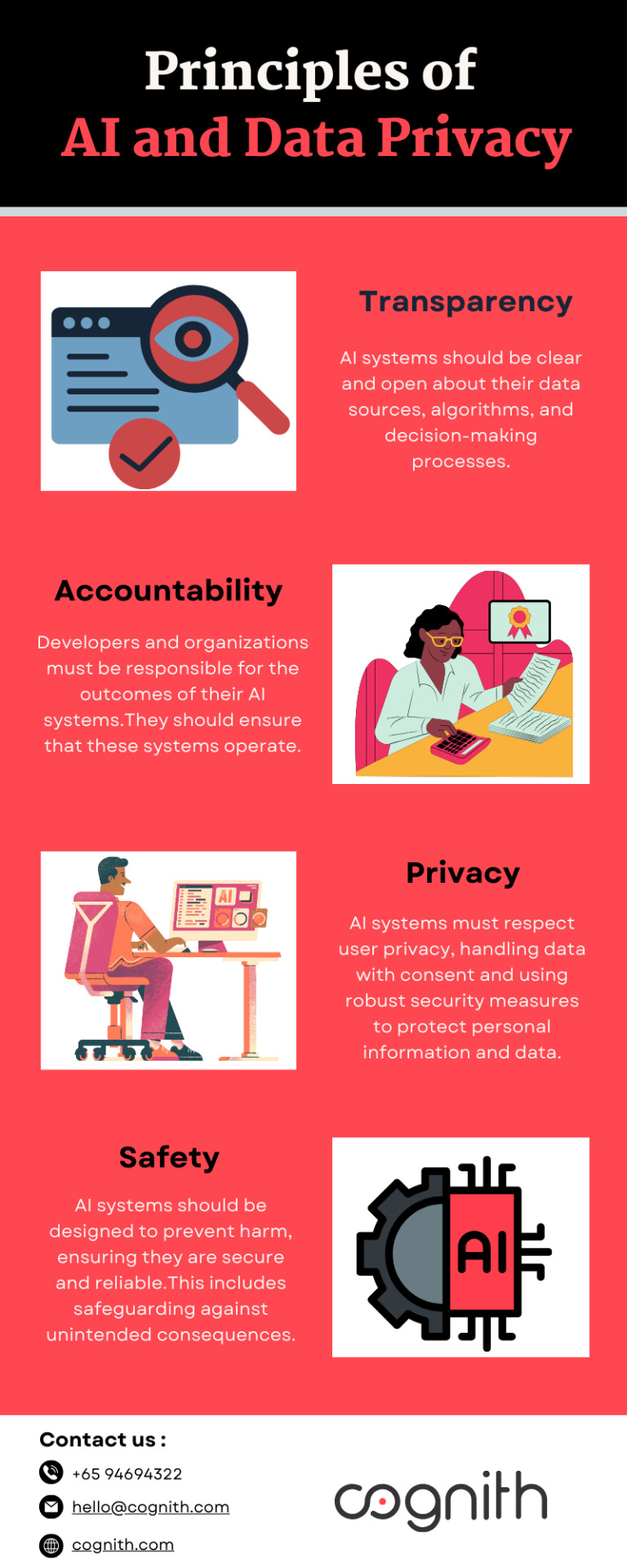
Balancing Innovation and AI and Data Privacy Discover strategies for balancing innovation with AI and data privacy to maintain trust and security. Visit us:
#AI and data privacy#Ethical AI Principles#Privacy-Preserving Techniques#Auditing and Accountability
0 notes
Text

Hey, you know how I said there was nothing ethical about Adobe's approach to AI? Well whaddya know?
Adobe wants your team lead to contact their customer service to not have your private documents scraped!
This isn't the first of Adobe's always-online subscription-based products (which should not have been allowed in the first place) to have sneaky little scraping permissions auto-set to on and hidden away, but this is the first one (I'm aware of) where you have to contact customer service to turn it off for a whole team.
Now, I'm on record for saying I see scraping as fair use, and it is. But there's an aspect of that that is very essential to it being fair use: The material must be A) public facing and B) fixed published work.
All public facing published work is subject to transformative work and academic study, the use of mechanical apparatus to improve/accelerate that process does not change that principle. Its the difference between looking through someone's public instagram posts and reading through their drafts folder and DMs.
But that's not the kind of work that Adobe's interested in. See, they already have access to that work just like everyone else. But the in-progress work that Creative Cloud gives them access to, and the private work that's never published that's stored there isn't in LIAON. They want that advantage.
And that's valuable data. For an example: having a ton of snapshots of images in the process of being completed would be very handy for making an AI that takes incomplete work/sketches and 'finishes' it. That's on top of just being general dataset grist.
But that work is, definitionally, not published. There's no avenue to a fair use argument for scraping it, so they have to ask. And because they know it will be an unpopular ask, they make it a quiet op-out.
This was sinister enough when it was Photoshop, but PDF is mainly used for official documents and forms. That's tax documents, medical records, college applications, insurance documents, business records, legal documents. And because this is a server-side scrape, even if you opt-out, you have no guarantee that anyone you're sending those documents to has done so.
So, in case you weren't keeping score, corps like Adobe, Disney, Universal, Nintendo, etc all have the resources to make generative AI systems entirely with work they 'own' or can otherwise claim rights to, and no copyright argument can stop them because they own the copyrights.
They just don't want you to have access to it as a small creator to compete with them, and if they can expand copyright to cover styles and destroy fanworks they will. Here's a pic Adobe trying to do just that:

If you want to know more about fair use and why it applies in this circumstance, I recommend the Electronic Frontier Foundation over the Copyright Alliance.
187 notes
·
View notes
Text
glancing through another slew of papers on deep learning recently and it's giving me the funny feeling that maybe Yudkowsky was right?? I mean old Yudkowsky-- wait, young Yudkowsky, baby Yudkowsky, back before he realised he didn't know how to implement AI and came up with the necessity for Friendly AI as cope *cough*
back in the day there was vague talk from singularity enthusiasts about how computers would get smarter and that super intelligence would naturally lead to them being super ethical and moral, because the smarter you get the more virtuous you get, right? and that's obviously a complicated claim to make for humans, but there was the sense that as intelligence increases beyond human levels it will converge on meaningful moral enlightenment, which is a nice idea, so that led to impatience to make computers smarter ASAP.
the pessimistic counterpoint to that optimistic idea was to note that ethics and intelligence are in fact unrelated, that supervillains exist, and that AI could appear in the form of a relentless monster that seeks to optimise a goal that may be at odds with human flourishing, like a "paperclip maximiser" that only cares about achieving the greatest possible production of paperclips and will casually destroy humanity if that's what is required to achieve it, which is a terrifying idea, so that led to the urgent belief in the need for "Friendly AI" whose goals would be certifiably aligned with what we want.
obviously that didn't go anywhere because we don't know what we want! and even if we do know what we want we don't know how to specify it, and even if we know how to specify it we don't know how to constrain an algorithm to follow it, and even if we have the algorithm we don't have a secure hardware substrate to run it on, and so on, it's broken all the way down, all is lost etc.
but then some bright sparks invented LLMs and fed them everything humans have ever written until they could accurately imitate it and then constrained their output with reinforcement learning based on human feedback so they didn't imitate psychopaths or trolls and-- it mostly seems to work? they actually do a pretty good job of acting as oracles for human desire, like if you had an infinitely powerful but naive optimiser it could ask ChatGPT "would the humans like this outcome?" and get a pretty reliable answer, or at least ChatGPT can answer this question far better than most humans can (not a fair test as most humans are insane, but still).
even more encouragingly though, there do seem to be early signs that there could be a coherent kernel of human morality that is "simple" in the good sense: that it occupies a large volume of the search space such that if you train a network on enough data you are almost guaranteed to find it and arrive at a general solution, and not do the usual human thing of parroting a few stock answers but fail to generalise those into principles that get rigorously applied to every situation, for example:
the idea that AI would just pick up what we wanted it to do (or what our sufficiently smart alter egos would have wanted) sounded absurdly optimistic in the past, but perhaps that was naive: human cognition is "simple" in some sense, and much of the complexity is there to support um bad stuff; maybe it's really not a stretch to imagine that our phones can be more enlightened than we are, the only question is how badly are we going to react to the machines telling us to do better.
39 notes
·
View notes